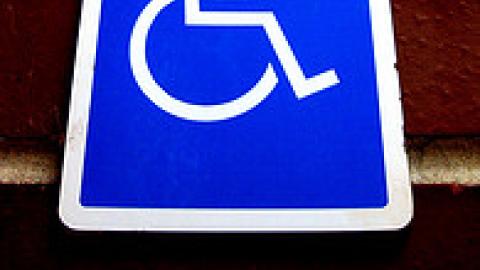World Report on Disability: Describing Disability
0 comments
79 views

The World Health Organization recently released the World Report on Disability (WRD). This extensive (325-page) investigation into disability and its affects worldwide provides important information for justice seekers, political leaders, and anyone wishing to work toward the inclusion of people with disabilities in society, including church life. Over the next few weeks, I’ll note some highlights from this report. Today, we'll think about the nature of disability.
With good reason, this report, like the the 2006 United Nations Convention on the Rights of Persons with Disabilities (CRPD), does not define disability, but instead describes it. Governments define disability to draw a line in the sand determining who may and who may not receive services based on disability status. Lines in the sand have their place when allocating resources, but not when society (or churches) want to understand people with disabilities better and become more inclusive as society and church.
Someone looking for a tight definition will feel frustrated by the five-page discussion/description of disability. But the most salient point comes at the beginning. Disability is not simply an impairment located in the body of some person. Rather, the report argues, “Disability is complex, dynamic, multidimensional, and contested. . . ." The Preamble to the CRPD acknowledges that disability is ‘an evolving concept’, but also stresses that “disability results from the interaction between persons with impairments and attitudinal and environmental barriers that hinder their full and effective participation in society on an equal basis with others”. Defining disability as an interaction means that ‘disability’ is not an attribute of the person. Progress on improving social participation can be made by addressing the barriers which hinder persons with disabilities in their day to day lives.”
That idea, that progress on improving social participation can be made by addressing barriers that hinder persons with disabilities in their day to day lives, comes close to home for churches that care about engaging people with disabilities. This engagement won’t happen if we non-disabled folks think of disability only as something that other people have to deal with.
We, all of us, create disability. That sentence sounds very strange. We might say, "I didn’t disable that boy who was born with Down syndrome. I didn’t break that man’s back. I didn’t give that woman multiple sclerosis." However, without intending to, we erect barriers to participation on church and society. When we construct buildings without attention to Universal Design (creating an architectural barrier), we disable people who have physical disabilities. When we set up our Sunday School for “typical” children (creating a programmatic barrier), we disable children who do not learn in typical ways. When we use small print with a low-contrast background on an overhead slide (creating a communication barrier), we disable the person who lives with a visual impairment.
In the preface to the WRD, Dr. Margaret Chan and Mr. Robert Zoellick write, “Across the world, people with disabilities have poorer health outcomes, lower education achievements, less economic participation and higher rates of poverty than people without disabilities. This is partly because people with disabilities experience barriers in accessing services that many of us have long taken for granted, including health, education, employment, and transport as well as information. These difficulties are exacerbated in less advantaged communities.”
Any congregation that is serious about hospitality and serious about justice must recognize that disability isn’t about those people over there, it is about us, and it affects nearly every aspect of church life (as well as society).
Disability Concerns, Church Admin & Finance
Disability Concerns, Church Admin & Finance
Disability Concerns, Training and Education
Disability Concerns
Connect to The Network and add your own question, blog, resource, or job.
Add Your Post
Let's Discuss
We love your comments! Thank you for helping us uphold the Community Guidelines to make this an encouraging and respectful community for everyone.